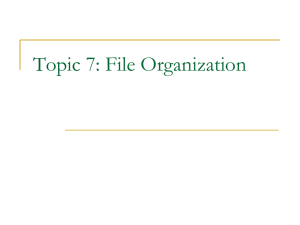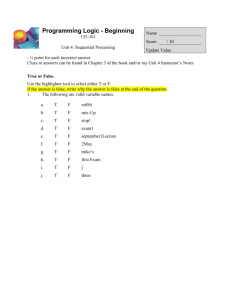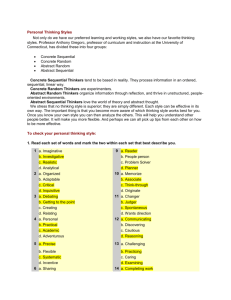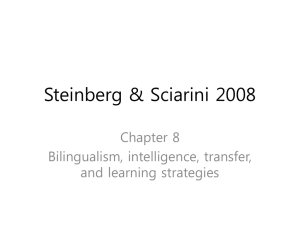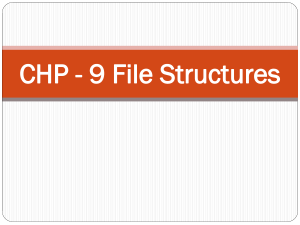ConfiguralProcessingNovemberHS28112
advertisement
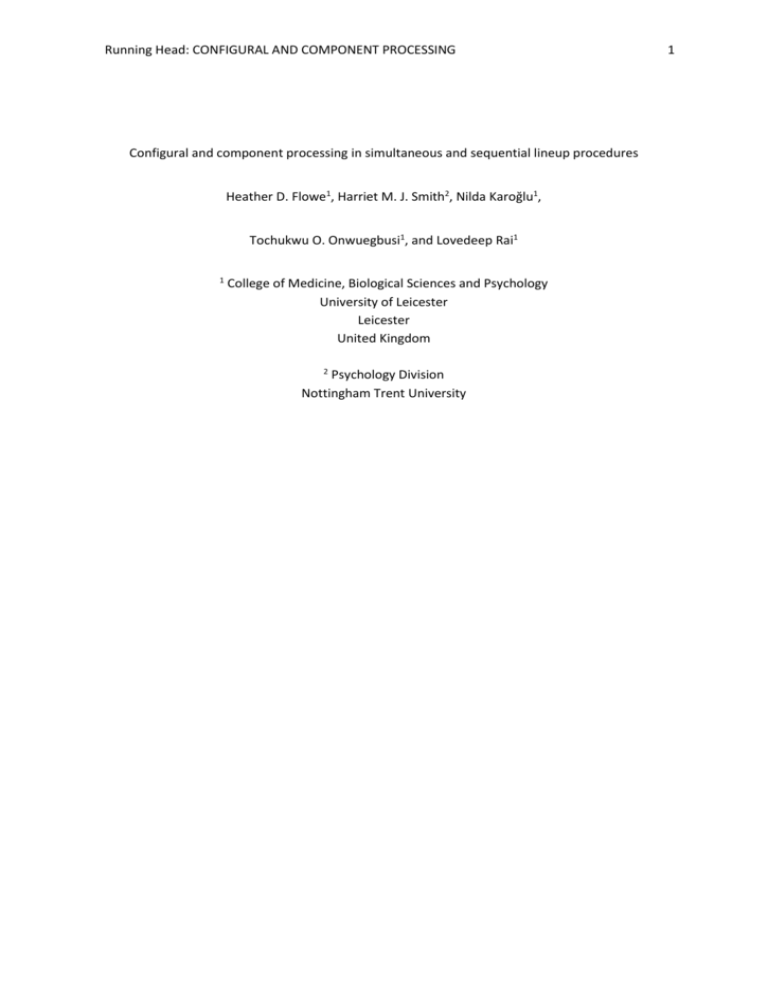
Running Head: CONFIGURAL AND COMPONENT PROCESSING Configural and component processing in simultaneous and sequential lineup procedures Heather D. Flowe1, Harriet M. J. Smith2, Nilda Karoğlu1, Tochukwu O. Onwuegbusi1, and Lovedeep Rai1 1 College of Medicine, Biological Sciences and Psychology University of Leicester Leicester United Kingdom 2 Psychology Division Nottingham Trent University 1 Running Head: CONFIGURAL AND COMPONENT PROCESSING 2 Abstract Configural processing supports accurate face recognition, yet it has never been examined within the context of criminal identification lineups. We tested, using the inversion paradigm, the role of configural processing in lineups. Recent research has found that face discrimination accuracy in lineups is better in a simultaneous compared to a sequential lineup procedure. Therefore, we compared configural processing in simultaneous and sequential lineups to examine whether there are differences. We had participants view a crime video, and then they attempted to identify the perpetrator from a simultaneous or sequential lineup. The test faces were presented either upright or inverted, as previous research has shown that inverting test faces disrupts configural processing. The size of the inversion effect for faces was the same across lineup procedures, indicating that configural processing underlies face recognition in both procedures. Discrimination accuracy was comparable across lineup procedures in both the upright and inversion condition. Theoretical implications of the results are discussed. Key words: Eyewitness identification, Simultaneous and sequential lineups, Receiver Operating Characteristics Analysis, Face perception Running Head: CONFIGURAL AND COMPONENT PROCESSING 3 Configural and component processing in simultaneous and sequential lineup procedures In forensic situations, eyewitnesses might be asked to identify the perpetrator of a crime from either a simultaneous or a sequential lineup. In a simultaneous procedure, the test face alternatives are displayed together in an array. Participants determine whether a previously seen face (i.e., the target) is embedded among the faces. They can either identify one of the faces (i.e., make a positive identification response), or identify none of them (i.e., make a rejection response). In a sequential procedure, the alternatives are shown one at a time, and a recognition decision (i.e., positive identification or rejection response) is made to each alternative. There has been much debate in the literature about whether identification accuracy varies across simultaneous and sequential lineups (e.g., Carlson, Gronlund, & Clark, 2008; Ebbesen & Flowe, 2002; Gronlund, 2005; Lindsay, Mansour, Beaudry, Leach & Bertrand, 2009; Meissner, Tredoux, Parker, MacLin, 2005; McQuiston-Surrett, Malpass, Tredoux, 2006; Steblay, Dysart & Wells, Fulero & Lindsay, 2001; Wells, Steblay, & Dysart, 2012). Typically, when the target (perpetrator) is present, the correct identification rate (or hit rate) is higher in the simultaneous condition, whereas when the target is absent, the false identification rate (or false alarm rate) is lower in the sequential condition (Clark, Howell, & Davey, 2008; Steblay et al., 2001; Steblay, Dysart, & Wells, 2011). These results have been found in event memory studies (e.g., Lindsay & Wells, 1985), in standard face recognition paradigms (e.g., Meissner et al., 2005) and in incidental learning tasks (e.g., Palmer & Brewer, 2012). It has been argued that performance was “superior” in a sequential ineup because the diagnosticity ratio, or the ratio of target to innocent suspect identifications, tends to be larger in the sequential condition (e.g., Steblay et al., 2011). Different explanations have been advanced to account for these results. On the one hand, the pattern of findings is consistent with the argument that participants employ a more liberal response criterion in a simultaneous test (Clark, 2012; Ebbesen & Flowe, 2002; Meissner et al., 2005; Palmer & Brewer, 2012). The adoption of a more liberal response criterion would lead to a higher hit Running Head: CONFIGURAL AND COMPONENT PROCESSING 4 rate when the target is present in the lineup, and a higher false alarm rate when the target is absent. On the other hand, this pattern of results is also consistent with the hypothesis that discrimination accuracy, or diagnostic accuracy, varies across procedures (Mickes, Flowe & Wixted, 2012). Discrimination accuracy refers to the ability to accurately detect the target from the fillers. What is more, the diagnosticity ratio might be larger in sequential compared to simultaneous lineups not because memory performance is better, but rather because choosing rates, which affect the size of the diagnosticity ratio, are lower in sequential procedures (Wixted & Mickes, 2012). In order to properly compare discrimination accuracy across procedures, differences in response bias, or willingness to make a positive identification, have to be taken into account. To investigate differences in discrimination accuracy across procedures, Mickes et al. (2012) employed Receiver Operator Characteristics (ROC) analysis. ROC analysis presents the cumulative hit and false alarm rate at each level of witness confidence, accumulating from the highest to the lowest confidence level. From the results we can ascertain the lineup procedure that produces the higher ROC; the higher the curve, the greater the discrimination accuracy afforded by the lineup procedure (for a review of ROC analysis applied to lineups, see Gronlund et al., 2012; Mickes et al., 2012). Mickes et al. (2012) conducted two studies, and found evidence that discrimination accuracy was greater in the simultaneous condition in Study 1a, whereas discrimination accuracy did not differ across procedures in Study 1b. Thus, their results were inconsistent with the notion that performance is superior in a sequential lineup. Gronlund and colleagues replicated and extended Mickes et al.’s (2012) results (Gronlund et al., 2012). First, they did not find evidence of sequential superiority. Instead, they found that discrimination accuracy was significantly better in simultaneous lineups, but only when the target was in a relatively early position (i.e., 2 versus 5). Performance did not vary across procedures when the target was placed in a later position. More recently, Dobolyi and Dodson (2013) also failed to Running Head: CONFIGURAL AND COMPONENT PROCESSING 5 find the sequential superiority effect. Rather, discrimination accuracy was higher in simultaneous compared to sequential lineups. Theories put forward to account for differences in accuracy across lineup procedures posit that witnesses may analyse the features of faces differently across lineups. Gronlund and colleagues (Carlson & Gronlund, 2011; Carlson, Gronlund, & Clark, 2008; Gronlund, 2005; Gronlund, Carlson, Dailey, & Goodsell, 2009) have proposed that since sequential participants view one face at time, they may have greater cognitive resources to retrieve specific memory content (Gronlund, 2005). They have argued that recollection-based processing and/or a recall-to-reject strategy, whereby a participant retrieves a specific feature of perpetrator’s face from memory, and examines whether any of the faces in the lineup have that feature, may operate to a greater extent in sequential compared to a simultaneous procedure. Recently, Wixted & Mickes (2014) put forward the diagnostic feature detection hypothesis to account for superior discrimination accuracy in simultaneous compared to sequential lineups. The theory proposes that discrimination accuracy is better in simultaneous lineups because the features of lineup members can be compared. Features that are shared by the perpetrator and the fillers do not provide information that allows the perpetrator to be distinguished from the fillers. However, unique suspect features do allow for establishing identity. If the perpetrator is present in the lineup, unique perpetrator features provide diagnostic information that allows the witness to distinguish the perpetrator from the fillers. In a sequential presentation, the features of lineup members cannot be easily compared. Given that extant theories are typically outlined using facial components to explain differences across procedures in memory retrieval processes, we wondered whether configural processing of test faces also varies across procedures. Accurate face recognition relies on the use of configural information (Diamond & Carey, 1986). Hence, given recent evidence that discrimination accuracy is better in simultaneous procedures, we considered the possibility that participants might be more sensitive to configural information in a simultaneous compared to sequential lineup. It is Running Head: CONFIGURAL AND COMPONENT PROCESSING 6 important to note that we are not disputing any existing theory that has been put forward regarding face processing in simultaneous versus sequential lineups. Rather, we are seeking to understand whether configural information, which is also a diagnotistic feature of identity, is differentially processed from the test faces depending on lineup procedure. In the discussion that follows, we will first briefly outline the role of configural versus component information in face recognition in general. We will then turn to the lineup literature in particular to examine whether there is any evidence that configural versus component processing differs across lineup presentation procedures. All faces contain the same feature components (eyes, nose, mouth), and first order relations (two eyes above a nose, which is above a mouth), yet people are able to store hundreds of face representations and use them to accurately differentiate between people (Bruce & Young, 1986). Although both component and configural information are important in face processing (Cabezo & Kato, 2000), configural information is relied on to a greater extent in processing faces than when processing non-face objects (Diamond & Carey, 1986). In comparison to faces, non-face objects are processed in a way that emphasises attention to components in isolation (Farah, Wilson, Drain & Tanaka, 1998; Maurer, Le Grand & Mondloch, 2002). It is important to note that there are many conceptualizations of configural processing, including detecting first-order relations across components, which allows for object categorisation (e.g. knowing an object is a house because it is made up of a door, windows, roof and a chimney), second-order configural processing, which involves perceiving how the features relate to each other in terms of distance (for a review, see Maurer et al., 2002), and holistic processing, which entails gluing the constituent parts (e.g. features of a face) together to form a Gestalt whole (Tanaka & Farah, 1993). Here, we are not distinguishing between these different types of configural processing, but rather examining configural processing in general. Running Head: CONFIGURAL AND COMPONENT PROCESSING 7 Few lineup studies have examined configural processing. This research has produced two main findings: First, participants who have a natural bias towards configural over component processing are more accurate on lineup tests (Darling, Martin, Hellmann & Memon, 2009). Second, lineup performance is affected by processing-bias interventions. Simultaneous lineup identification performance is enhanced by inducing a configural compared to a local processing bias via the administration of a Navon task immediately before a lineup test (MacCrae & Lewis, 2002; Perfect, 2003). Biasing global processing using Navon stimuli also improves performance in sequential lineups (Perfect, Dennis, & Snell, 2007). Rather than considering how processing styles influence lineup performance (MacCrae & Lewis, 2002; Perfect, 2003; Perfect et al. 2007), the present study is concerned with how lineup format affects processing styles. This related, but distinct, question extends previous research by testing whether – in the absence of any type of processing-bias intervention - people differentially engage in configural versus local processing depending on whether the test faces are presented simultaneously or sequentially. In other words does the balance of configural- versus component-based processing of the test faces differ across lineup procedures, and might this contribute to the different performance patterns on simultaneous and sequential lineups? We examined face processing in lineups using the inversion paradigm. Experimentally, inverting a face disrupts configural processing without affecting component processing (Bartlett & Searcy, 1993; Freire, Lee & Symons, 2000; Searcy & Bartlett, 1996). An inverted face is more difficult to recognise (see Searcy & Bartlett, 1996 for a review; Tanaka & Farah, 1993), retrieval reaction times are longer (Yin, 1969) and face distortions are more difficult to perceive (Bartlett & Searcy, 1993; Thompson, 1980). Although the literature highlights the impact of inversion on second-order relational processing (e.g., Bruce, Doyle, Dench & Burton, 1991; Leder & Bruce, 2000), it has been argued that inversion affects all 3 types of configural processing (Maurer et al., 2002). In comparison to other objects, face recognition is disrupted more by inversion (Yin, 1969), supporting the hypothesis that face as opposed to object processing relies more on configural processing. The size Running Head: CONFIGURAL AND COMPONENT PROCESSING 8 of the inversion effect, or the difference in accuracy across the inverted and upright conditions, is used to index the extent of configural processing taking place (e.g. Mondloch et al., 2002). When test faces are upright, we expected higher discrimination accuracy in a simultaneous compared to a sequential lineup on the basis of findings from the aforementioned research that has used ROC analysis. If the difference in accuracy across lineup procedures arises because processing in sequential lineups is more component-based, then inverting the test faces should have a smaller effect on accuracy in a sequential compared to a simultaneous test. In fact, inverting the test faces may even enhance performance in a sequential lineup because inversion may improve the processing of individual features (see Young, Hellawell & Hay, 1987). Thus, we predicted that the size of the inversion effect would be greater in simultaneous compared to sequential lineups. Method Design A 2 test procedure (simultaneous or sequential) x 2 test face orientation (upright or inverted) x 2 target condition (present or absent) between-subjects design was employed. Participants Ethical approval was obtained from the University of X’s Ethics Committee. We recruited 1,314 individuals from Amazon Mechanical Turk, which is a crowd sourcing platform, because several hundred responses were needed to determine the ROCs. Participants ranged from 18 to 73 years (M= 32.67, SD = 10.88 years), and 41% were female. With respect to self-reported race/ethnic backgrounds, 54% reported Caucasian, 32% South Asian, and 14% reported other ethnicities. Participants were paid 25 cents for their participation. Stimuli and Procedure Running Head: CONFIGURAL AND COMPONENT PROCESSING 9 Participants were told that they were going to watch a video, and to pay attention because they would be asked questions about it. Each participant was randomly assigned to view one of two different crime videos. The first was 17 seconds long, and it portrayed a 24-year old Caucasian male, who onscreen for the duration of the clip, breaking into a car and stealing a cell phone. The second video was 24 seconds long, and it portrayed a 25-year old Caucasian male, who was onscreen for the duration of the clip, walking into an office and stealing a laptop computer. After a 3 min distractor task, participants were shown a 6-person lineup. A unique lineup was built for each target. The fillers were selected based on their match to a modal physical description (hair colour, hair style, build, eye colour, race/ethnicity, and no facial hair) of the culprit, which was produced by 4 research assistants. Mock witness testing of the lineups conducted with a separate group of participants (n = 30 for each lineup) indicated that Tredoux’s E was 4.52, which is comparable to field research with actual lineups (e.g., Valentine & Heaton, 1999). In the target absent condition, the target was removed and replaced with a filler. Participants were randomly assigned to an experimental condition. They were given a single lineup test that was presented either simultaneously or sequentially, with the test stimuli oriented either upright or inverted. Half of the participants took a target present test, the other half, a target absent test. In the simultaneous condition, the test stimuli were presented in a 2 x 3 matrix. Participants were asked to positively identify a photo by number, or to not select a photo if they did not recognise anyone from the video. In the sequential condition, the photos were presented one at a time. Participants positively identified a photo if they thought it was of the person from the video. If they did not, then the next photo was shown. The sequential lineup photos were shown until the participant positively identified a photo. If they did not make a positive identification, all 6 photos were shown. Participants did not know in advance how many photos there would be. In both the simultaneous and sequential condition, the target appeared in either position 2 or position 5. Additionally, participants were warned, “one of the previously studied photos may not Running Head: CONFIGURAL AND COMPONENT PROCESSING 10 be present in the lineup, and as such, not identifying any of the photos may be the correct response”. After making a positive identification, participants rated their confidence that they had studied the photo previously. Confidence ratings were obtained using an 11-point scale, anchored at 0% (not at all confident), and 100% (absolutely confident). Data Analysis The accuracy of each participant’s identification was coded. In the target present condition, a hit was defined as a correct positive identification of a previously seen photo. In the target absent condition, positively identifying a photo was a false alarm. The hit and false alarm data were conditioned on lineup procedure by test stimulus orientation. Confidence-based ROCs were then constructed for each condition (see Gronlund, Wixted, & Mickes, 2014 for a tutorial on the application of ROC analysis to lineup research). To construct the ROCs, the proportion of responses that were hits in the target present condition and the proportion of responses that were false alarms in the target absent condition were determined for each confidence level. Then, the proportion of hits and false alarms obtained were cumulated across confidence levels, starting at the lowest confidence level (100%) and ending with the highest confidence level (0%). Since there was not a target-lookalike (the equivalent of an innocent suspect in the real world), the cumulative false alarm rate obtained at a given confidence level was divided by 6. This allows for estimating the rate that an innocent suspect would be selected by chance alone. The resulting value provides an estimate of the rate at which an innocent suspect would be identified at that particular confidence level and higher confidence levels. The effect of inverting the test stimuli was examined within each test procedure by comparing the confidence-based ROCs for inverted and upright conditions. Here, a partial area under the curve (pAUC) analysis was undertaken to compare the size of the area under the curve for the upright and inverted conditions. pAUC was conducted because in a target absent lineup test, where there is effectively more than one face to choose from (i.e., the fillers are plausible response Running Head: CONFIGURAL AND COMPONENT PROCESSING 11 alternatives), the false alarm rate for a given face will not be 1.0. As such, specificity (1-false alarm rate) was set in the pAUC analysis to a value based on the condition in the analysis that had the highest overall false alarm. pAUC was computed using pROC (Robin et al., 2011). Results Identification outcomes, and diagnosticity ratios as a function of experimental condition are provided in Table 1. Descriptively speaking, the target was identified correctly more often in the simultaneous compared to the sequential condition. The filler identification rate was comparable across procedures, but it was slightly higher in the simultaneous compared to the sequential condition, in both the inverted and upright conditions. Thus, the diagnosticity ratios in the inverted and upright conditions were similar across procedures, albeit they were a bit smaller in the sequential compared to the simultaneous condition. The pattern of results was similar across the two crime videos, with the target correctly identified 24% and 39% of the time in videos 1 and 2, respectively, and with the false alarm rate in the target absent being 53% and 48% in videos 1 and 2, respectively. In the target present condition, the target identification rate did not significantly differ across positions 2 (36%) and 5 (27%). We did not have an innocent suspect, so did not examine innocent suspect identifications in relation to position. The patterns were similar across the upright and inverted conditions; hence, we collapsed across video and target position in the ROC analyses. The ROCs obtained for the simultaneous and sequential conditions as a function of test face orientation are shown in Figure 1. If face processing is more component-based in sequential lineups, inverting the test faces should have a smaller effect on discrimination accuracy in the sequential compared to the simultaneous condition. As can be seen, responses fell on a higher ROC for the upright compared to the inverted condition, in both the simultaneous and the sequential conditions, suggesting that an inversion effect for faces was obtained in both test procedures. Indeed, pAUC Running Head: CONFIGURAL AND COMPONENT PROCESSING 12 analysis found that diagnostic accuracy was greater in the upright compared to the inverted condition in the simultaneous condition (pAUC was .27 for upright faces versus .08 for inverted faces; D = 6.48, p < .001), and in the sequential condition (pAUC was .22 for upright faces versus .07 for inverted faces; D = 5.88, p < .001). Thus, inverting the test faces disrupted face processing in both simultaneous and sequential lineups. Based on previous research, we predicted that discrimination accuracy would be larger in simultaneous compared to sequential procedures when the test faces are upright. However, discrimination accuracy did not vary as a function of lineup procedure when the test faces were upright (D = .85, p = .39, pAUC simultaneous = .17, pAUC sequential = .15), or when the test faces were inverted (D = .33, p = .74, pAUC simultaneous = .09, pAUC sequential = .08). Hence, lineup performance was not superior in sequential lineups. Moreover, it is also clear from this analysis that inverting the test faces negatively impacted configural processing to the same extent across lineup procedures. We examined whether participants in the simultaneous condition set a lower decision standard compared to sequential participants by comparing the false alarm rates. When the target was absent from the lineup, the false alarm rate was larger in simultaneous compared to simultaneous lineups; however, this difference was not significantly larger in either the upright (.48 versus .39, respectively; χ2(1) = 2.82, p = 09), or the inverted condition (.63 versus .61, respectively; χ2(1) = .25, p = .61). Finally, we examined the impact of inversion on filler identification rates, and on correct rejection rates. For simultaneous lineups, inverting the test faces increased the filler identification rate, both in the target present condition (.18 upright versus .47 inverted, χ2(1) = 31.01, p < .0001), and in the target absent condition (.48 upright versus .63 inverted, χ2(1) = 6.88, p < .01). For sequential lineups, inverting the test faces also significantly increased the filler identification rate, both in the target present condition (.22 upright versus .42 inverted, χ2(1) = 16.58, p < .0001), and in Running Head: CONFIGURAL AND COMPONENT PROCESSING 13 the target absent condition(.39 upright versus .61 inverted, χ2(1) = 15.89, p < .0001). As for correct rejections in target present lineups, inverting the test faces did not affect the rejection rate in the simultaneous condition (.26 versus .23, χ2(1) = 0.31, p > .05), nor in the sequential condition (.38 versus .35, χ2(1) = 0.40, p > .05). Discussion A number of theories have been put forward to describe how lineup presentation procedures affect face recognition. These theories describe face recognition processes in terms of how features of faces are recognized. Accurate face recognition depends not only on the accurate recognition of facial features, but also on configural processing. As of yet, research has not tested whether the configural analysis of test faces differs across lineup procedures. We tested whether configural processing contributes to accurate face recognition in simultaneous and sequential lineups. Several findings emerged. First, we made a novel contribution to the literature, finding that configural processing of faces is important for accurate recognition in both simultaneous and sequential procedures. Faces were identified more accurately if presented upright rather than inverted, regardless of whether the test faces were shown simultaneously or sequentially. Therefore, the hypothesis that face processing is more component-based in a sequential compared to a simultaneous lineup was not supported. Second, our results extend previous research, which has found that inducing a shift to configural processing improves lineup identification performance (MacCrae & Lewis, 2002; Perfect, 2003; Perfect, Dennis, & Snell, 2007). Performance on a lineup test can be enhanced by as much as 20% by inducing a configural processing shift just before the lineup test (see Perfect, Dennis, & Snell, 2007, Table 3). Other research has shown that participants who have a natural bias towards configural over component processing are more accurate on lineup tests (Darling, Martin, Hellmann & Memon, 2009). We found that when configural processing is experimentally disrupted by inverting Running Head: CONFIGURAL AND COMPONENT PROCESSING 14 the test faces, lineup identification performance suffers. Third, our study also extends research on the configural processing of faces during memory retrieval, which up until now has been investigated using standard face recognition paradigms (e.g., yes/no paradigm, 2AFC). We have shown that the inversion effect extends to an eyewitness memory study, using a lineup identification test. Thus, our study demonstrates that configural aspects of faces are important in recognizing faces, independent of the specific testing paradigm that is used. Fourth, our results contribute to the growing body of research comparing lineup identification procedures using ROC analysis. Prior to the use of ROC analysis, it was argued that performance in sequential lineups was “superior” compared to simultaneous procedures (e.g., Steblay et al., 2011). Recent research employing ROC analysis, which allows one to take into account response bias, has not found a sequential superiority effect. Rather, this research has found either no difference in performance across procedures (Mickes et al., 2012, experiment 1b), or increased discrimination accuracy in simultaneous compared to sequential lineups (Mickes et al., 2012, experiment 1a; Gronlund et al., 2012; Dobyi &Dodson, 2013). Likewise, we did not find that discrimination accuracy was greater in sequential compared to simultaneous lineups. Performance in simultaneous lineups fell on a higher ROC compared to sequential lineups, albeit this difference was not statistically significant. We also found that decision criterion placement was comparable across procedures. This was the case both when the test stimuli were upright and when they were inverted. Though not a central aim of the study, we examined the rate of target identifications in relation to suspect position, and did not find any position effects. However, our study was not designed to examine whether discrimination accuracy varies in relation to suspect position, because we did not replace the target with a look-alike in the target absent condition. Previous research employing target look-alikes has found position effects (Gronlund et al. 2012; Gronlund et al., 2009). Gronlund and colleagues (2009) posited that sequential participants become better at discriminating Running Head: CONFIGURAL AND COMPONENT PROCESSING 15 faces as the lineup unfolds, because different features are recalled with each face that is seen. The more test faces participants see, the more proficient they become at retrieving the features of the culprit’s face. Consequently, performance is better in a sequential lineup when the target appears later in the lineup. There is also evidence that decision criterion placement may vary in relation to suspect position. Sequential participants have been found to alter their decision process depending on the number of alternatives that they have seen (Clark & Davey, 2005; Ebbesen & Flowe, 2002; Flowe & Ebbesen, 2007), the similarity of the lineup members relative to the target, (Flowe & Ebbesen, 2007), and whether they know the number of alternatives (Horry, Palmer, & Brewer, 2012). The National Academy of Sciences recently evaluated the evidence on whether performance is better in sequential compared to simultaneous lineups, and concluded that they could not endorse one particular procedure over the other (National Research Council, 2014). Likewise, we did not find support for a sequential superiority effect, nor did we find evidence that discrimination accuracy varies across procedures. Additional research is needed to examine how characteristics of the test stimuli affect memory retrieval across lineup procedures. Additional research is needed to describe the boundary conditions of the simultaneous superiority effect. For instance, we already know that the position of the suspect influences whether discriminability differs across procedures (Gronlund et al., 2012), and there may be other procedural variations that affect discrimination accuracy. Further experimentation is also needed to test procedural innovations to enhance how we process facial components and configural aspects of faces in order to improve eyewitness identification accuracy. In sum, we examined whether disrupting configural processing has a similar effect on discrimination accuracy in simultaneous and sequential lineups. We found that inverting the test faces decreased accuracy in both procedures, indicating that configural information supports Running Head: CONFIGURAL AND COMPONENT PROCESSING 16 accurate recognition in simultaneous and sequential lineups. Additional work is needed to more fully explain how presentation procedure impacts memory retrieval processes. Running Head: CONFIGURAL AND COMPONENT PROCESSING 17 References Bartlett, J. C., & Searcy, J. H. (1993). Inversion and configuration of faces. Cognitive Psychology, 25(3), 281-316. doi: 10.1006/cogp.1993.1007 Bruce, V., & Young, A. (1986). Understanding face recognition. British Journal of Psychology, 77(3), 305-327. doi: 10.1111/j.2044-8295.1986.tb02199.x Bruce, V., Doyle, T., Dench, N., & Burton, M. (1991). Remembering facial configurations. Cognition, 38(2), 109-144. doi: 10.1016/0010-0277(91)90049-A Cabeza, R., & Kato, T. (2000). Features are also important: Contributions of featural and configural processing to face recognition. Psychological Science, 11(5), 429–433. doi: 10.1111/14679280.00283 Carbon, C. C., & Leder, H. (2005). When feature information comes first! Early processing of inverted faces. Perception 34(9), 1117–1134. doi: 10.1068/p5192 Carlson, C. A. (2011). Influence of a perpetrator’s distinctive facial feature on eyewitness identification from simultaneous versus sequential lineups. Applied Psychology in Criminal Justice, 7(2), 77-92. Carlson, C. A., & Gronlund, S. D. (2011). Searching for the sequential lineup advantage: A distinctiveness explanation. Memory, 19(8), 916–929. doi:10.1080/09658211.2011.613846 Carlson, C. A., Gronlund, S. D., & Clark, S. E. (2008). Lineup composition, suspect position, and the sequential lineup advantage. Journal of Experimental Psychology: Applied, 14(2), 118-128. doi: 10.1037/1076-898X.14.2.118 Clark, S. (2012). Costs and benefits of eyewitness identification reform: Psychological science and public policy. Perspectives on Psychological Science, 7(3), 238–259. doi: 10.1177/1745691612439584 Clark, S. E., & Davey, S. L. (2005). The target-to-foils shift in simultaneous and sequential lineups. Law and Human Behavior, 29(2), 151–172. doi: 10.1007/s10979-005-2418-7 Running Head: CONFIGURAL AND COMPONENT PROCESSING 18 Clark, S. E., Howell, R. T., & Davey, S. L. (2008). Regularities in eyewitness identification. Law and Human Behavior, 32(3), 187–218. doi: 10.1007/s10979-006-9082-4 Darling, S., Martin, D., Hellmann, J. H., & Memon, A. (2009). Some witnesses are better than others. Personality & Individual Differences, 47(4), 369−373. doi: 10.1016/j.paid.2009.04.010 Diamond, R., & Carey, S. (1986). Why faces are and are not special: An effect of expertise. Journal of Experimental Psychology: General, 115(2), 107-117. doi: 10.1037/0096-3445.115.2.107 Dobolyi, D. G., & Dodson C.S. (2013). Eyewitness confidence in simultaneous and sequential lineups: a criterion shift account for sequential mistaken identification overconfidence. Journal of Experimental Psychology: Applied, 19, 345-357. doi: 10.1037/a0034596 Donnelly, N., & Davidoff, J. (1999). The mental representations of faces and houses: Issues concerning parts and wholes. Visual Cognition, 6(3), 319–343. doi: 10.1080/135062899395000 Ebbesen, E. B., & Flowe, H. D. (2002). Simultaneous v. sequential lineups: What do we really know? Unpublished manuscript. Farah, M. J., Wilson, K. D., Drain, M., & Tanaka, J. N. (1998). What is “special” about face perception? Psychological Review, 105(3), 482–98. doi: 10.1037/0033-295X.105.3.482 Flowe, H. D. (2011). An exploration of visual behaviour in eyewitness identification tests. Applied Cognitive Psychology, 25(2), 244–254. doi: 10.1002/acp.1670 Flowe, H. D., & Ebbesen, E. B. (2007). The effect of lineup member similarity on recognition accuracy in simultaneous and sequential lineups. Law and Human Behavior, 31(1), 33–52. doi: 10.1007/s10979-006-9045-9 Freire, A., Lee, K., & Symons, L.A. (2000). The face-inversion effect as a deficit in the encoding of configural information: direct evidence. Perception, 29(2), 159–170. doi: 10.1068/p3012 Gauthier, I., & Tarr, M. J. (1997). Becoming a "Greeble" expert: Exploring mechanisms for face recognition. Vision Research, 37(12), 1673-1682. Doi: 10.1016/S0042-6989(96)00286-6. Running Head: CONFIGURAL AND COMPONENT PROCESSING 19 Gronlund, S. D. (2005). Sequential lineup advantage: Contributions of distinctiveness and recollection. Applied Cognitive Psychology, 19(1), 23–37. doi: 10.1002/acp.1047 Gronlund, S. D., Carlson, C. A., Dailey, S. B., & Goodsell, C. A. (2009). Robustness of the sequential lineup advantage. Journal of Experimental Psychology: Applied, 15, 140–152. doi:10.1037/a0015082 Gronlund, S. D., Carlson, C. A., Neuschatz, J. S., Goodsell, C. A., Wetmore, S., Wooten, A., & Graham, M. (2012). Showups versus lineups: An evaluation using ROC analysis. Journal of Applied Research in Memory and Cognition, 1(4), 221-228. doi: 10.1016/j.jarmac.2012.09.003 Gronlund, S. D., Wixted, J. T. & Mickes, L. (2014). Evaluating eyewitness identification procedures using ROC analysis. Current Directions in Psychological Science, 23, 3-10. doi: 10.1177/0963721413498891 Horry, R., Palmer, M. A., & Brewer, N. (2012). Backloading in the sequential lineup prevents withinlineup criterion shifts that undermine eyewitness identification performance. Journal of Experimental Psychology: Applied, 18(4), 346-360. doi: 10.1037/a0029779 Leder, H. and Bruce, V. (2000). When inverted faces are recognised: The role of configural information in face recognition. Quarterly Journal of Experimental Psychology, 53A(2), 513536. doi: 10.1080/713755889 Lindsay, R. C. L., Mansour, J. K., Beaudry, J. L., Leach, A. M., & Bertrand, M. I. (2009). Sequential lineup presentation: Patterns and policy. Legal and Criminological Psychology, 14(1), 13-24. doi: 10.1348/135532508X382708 Lindsay, R. C., & Wells, G. L. (1985). Improving eyewitness identifications from lineups: Simultaneous versus sequential lineup presentation. Journal of Applied Psychology, 70(3), 556-564. doi:10.1037/0021-9010.70.3.556 Maurer D., Le Grand R., Mondloch C.J. (2002). The many faces of configural processing. Trends in Cognitive Sciences, 6(6), 255–260. doi: 10.1016/S1364-6613(02)01903-4 Running Head: CONFIGURAL AND COMPONENT PROCESSING 20 McQuiston-Surrett, D. E., Malpass, R. S., & Tredoux, C. G. (2006). Sequential vs. simultaneous lineups: A review of methods, data, and theory. Psychology, Public Policy, and Law, 12(2), 137–169. doi: 10.1037/1076-8971.12.2.137 Meissner, C. A., Tredoux, C. G., Parker, J. F., & MacLin, O. H. (2005). Eyewitness decisions in simultaneous and sequential lineups: A dual process signal detection theory analysis. Memory & Cognition, 33(5), 783–792. doi: 10.3758/BF03193074 Mickes, L., Flowe, H. D., & Wixted, J. T. (2012). Receiver Operating Characteristic analysis of eyewitness memory: Comparing the diagnostic accuracy of simultaneous vs. sequential lineups. Journal of Experimental Psychology: Applied, 18(4). doi: 10.1037/a0030609 Mondloch, C. J., Le Grand, R., & Maurer, D. (2002). Configural face processing develops more slowly than featural face processing. Perception, 31(5), 553-566. doi: 10.1068/p3339 National Research Council (2014). Identifying the Culprit: Assessing Eyewitness Identification. Washington, DC: The National Academies Press. Palmer, M. A., & Brewer, N. (in press2012). Sequential lineup presentation promotes less biased criterion setting but does not improve disciminability. Law and Human Behavior, 36(3), 247255. doi: 10.1037/h0093923 Perfect, T. J. (2003). Local processing bias impairs line-up performance. Psychological Reports, 93(2), 393-394. doi: 10.2466/pr0.2003.93.2.393 Perfect, T.J., Dennis, I. & Snell, A. (2007). The effects of local and global processing orientation on eyewitness identification performance. Memory, 15, 784-798. doi:10.1080/09658210701654627 Robin, X., Turck, N., Hainard, A., Tiberti, N., Lisacek, F., Sanchez, J., & Müller, M. (2011). pROC: An open-source package for R and S+ to analyze and compare ROC curves. BMC Bioinformatics, 12, 77. doi: 10.1186/1471-2105-12-77 Running Head: CONFIGURAL AND COMPONENT PROCESSING 21 Searcy, J. H., & Bartlett, J. C. (1996). Inversion and processing of component and spatial-relational information in faces. Journal of Experimental Psychology: Human Perception and Performance, 22(4), 904- 915. doi: 10.1037/0096-1523.22.4.904 Steblay, N. K., Dysart, J. E., & Wells, G. L. (2011). Seventy-two tests of the sequential lineup superiority effect: A meta-analysis and policy discussion. Psychology, Public Policy, and Law, 17(1), 99-139. doi:10.1037/a0021650 Steblay, N. M., Dysart, J., Fulero, S., & Lindsay, R. C. L. (2001). Eyewitness accuracy rates in sequential and simultaneous lineup presentations: A metaanalytic comparison. Law and Human Behavior, 25(5), 459-473. doi: 10.1023/A:1012888715007 Tanaka, J. W., & Farah, M. J. (1993). Parts and wholes in face recognition. Quarterly Journal of Experimental Psychology, 46(2), 225-245. doi: 10.1080/14640749308401045 Thompson, P. ( 1980). Margaret Thatcher: A new illusion. Perception, 9(4), 483-484. doi: 10.1068/p090483 Wells, G. L. (1993). What do we know about eyewitness identification? American Psychologist, 48(5), 553–571. doi: 10.1037/0003-066X.48.5.553 Wells, G. L., & Bradfield, A. L. (1999). Distortions in eyewitnesses' recollections: Can the postidentification feedback effect be moderated? Psychological Science, 10, 138– 144. doi: 10.1111/1467-9280.00121 Wells, G. L., Steblay, N. K., & Dysart, J. E. (2012). Eyewitness identification reforms: Are suggestiveness-induced hits and guesses true hits? Perspectives on Psychological Science, 7(3), 264–271. doi: 10.1177/1745691612443368 Wixted, J. T. & Mickes, L. (2012). The field of eyewitness memory should abandon “probative value” and embrace Receiver Operating Characteristic analysis. Perspectives on Psychological Science, 7, 275-278. doi: 10.1177/1745691612442906 Wixted, J. T. & Mickes, L. (2014). A signal-detection-based diagnostic feature-detection model of eyewitness identification. Psychological Review, 121, 262-276. doi: 10.1037/a0035940 Running Head: CONFIGURAL AND COMPONENT PROCESSING 22 Yin, R. K. (1969). Looking at upside-down faces. Journal of Experimental Psychology, 81(1), 141-145. doi: 10.1037/h0027474 Young, A.W., Hellawell, D., & Hay, D.C. (1987). Configurational information in face perception. Perception, 16(6), 747-759. doi: 10.1068/p160747 Running Head: CONFIGURAL AND COMPONENT PROCESSING 23 Table 1. Identification Outcomes and the Diagnosticity Ratio by Lineup Procedure, Test Face Orientation, and Target Condition. SIMULTANEOUS Upright TP (n = 168) TA (n = 147) Target 0.56 Fillers 0.18 0.48 Reject 0.26 0.52 Diagnosticity Ratio* 6.99 Inverted TP (n = 149) TA (n = 175) Target 0.30 Fillers 0.47 0.63 Reject 0.23 0.37 Diagnosticity Ratio 3.69 SEQUENTIAL Upright TP (n = 187) TA (n = 172) Target 0.40 Fillers 0.22 0.39 Inverted Reject 0.38 0.61 6.17 TP (n = 153) TA (n = 163) Target 0.22 Fillers 0.42 0.61 Reject 0.35 0.39 Diagnosticity Ratio 3.42 *In the target absent condition, an all-filler lineup was used (i.e., there was no innocent suspect). Therefore, the dignosticity ratio was computed by dividing the target identification rate by the estimated innocent suspect identification rate, which was determined by dividing the filler identification rate in the target absent condition by lineup size (i.e., 6). Running Head: CONFIGURAL AND COMPONENT PROCESSING 24 1.00 0.90 0.80 Hit Rate 0.70 0.60 Sim Upright 0.50 Seq Upright 0.40 Sim Inverted 0.30 Seq Inverted 0.20 chance 0.10 0.00 0.00 0.02 0.04 0.06 0.08 0.10 0.12 0.14 0.16 False Alarm Rate Figure 1. ROC analysis of hit and false-alarm rate data from the experiment, conditioned on lineup procedure (sequential or simultaneous), and test face orientation (upright or inverted).

